As episode 305 came together, I remembered having had a blog post on my site Hundred Percent Cotton for years describing what cows eat and why. I had a veterinarian friend — Dr. Kathy Swift who also does really awesome art — put together the information to answer my question on the various components of the diet cattle need.
Kathy points out a few key points:
- Feeding cattle properly is a very important part of keeping them healthy.
- Like with people, a lot of diseases can be treated and prevented through proper nutrition.
- Cows have a very unique microbial population in their stomach that allows them to digest parts of plants that humans cannot. This presents a unique situation and opportunity.
- Like a lot of households building a grocery budget, feeding cattle economically is also important. In fact, for dairy farmers, 50 percent of the expenses on a farm can be on feed! So finding nutritional and economical sources of quality feedstuffs is also important.
Working with livestock nutritionists and veterinarians, farmers find various sources of calories, ruffage and more that the cows will need. Grass is a big part of that, but knowing how seasons work and grass goes dormant, farmers harvest feeds or bring them in for storage.
That leads us to one of the points we discussed in the episode, farmers feed a range of byproducts to their cattle. There are several reasons farmers turn to byproducts on farm and off.
Farmers Embraced Sustainability Long Ago
Finding uses for those things that are left over is something farmers have done for all time. And that is a major piece of sustainable, environmental practices. And sometimes these byproducts come from other farms or ag-related businesses, and may otherwise end up in landfills, etc but can provide some key nutrition for cattle.
As Kathy shared the information, she also shared some photos. The rest is the way Kathy wrote it out for me:
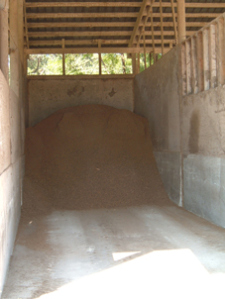
Before farmer even begin with feeding byproducts, you have to decide where you’re going to put them. Proper storage of these feed ingredients is essential.
Notice the roof and concrete walls? This keeps the area dry and reduces the amount of spoilage. The concrete wall and floors also allow for a thorough cleanup once the area is empty.
The feed barn is separated into “bays” by a concrete wall in between. This allows only one feed ingredient to be in each bay. This allows for better inventory control and allows the farmer to only include that specific ingredient when making a feed mix.
Now that we’ve got a place to put them, I’m going to show some of the individual feed ingredients.
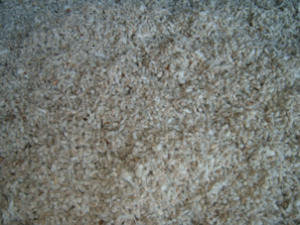
This is a pile of whole cottonseed. When cotton plants are harvested and processed to get the cotton fibers, the seeds are captured by the cotton gin. This whole cottonseed is a good source of fiber, energy and protein for cattle. Yes, it’s as soft as it looks. (I must admit I have taken a running leap into the pile on an occasion or two.)
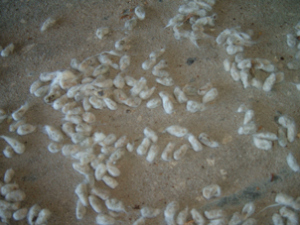
The white “fuzzy” portion is actually not cotton, but the cellulose portion that makes it fiber effective. (Remember that special bacteria I said cows have? It allows them to digest the cellulose.)
Cottonseed can be fed to adult cattle because their stomach bacteria are capable of digesting it. Monogastric animals (like people, cats and dogs) and young cattle and chickens cannot eat whole cottonseed because of the naturally-occurring plant chemical gossypol, which they are overly sensitive to.
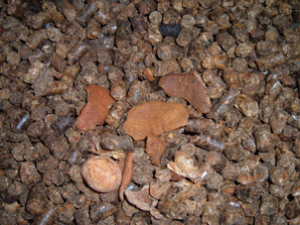
Citrus pulp is another feed byproduct for cattle. It is the dried leftovers of the pulp, peels and seeds of grapefruit, oranges, lemons and limes. The pulp is created during the process of juicing citrus fruit, something we have a lot of in Florida, compared to the rest of the country. This pulp is dried by machines to a moisture level of approximately 10 percent (pretty dry). It is a good source of calcium and carbohydrates and the cows love it! It smells like the orange extract you use when you’re baking. To make it easier to store, a portion of it will get made into pellet form, but the cows enjoy the peel form better. This, of course, is a very economical feed product in Florida since most dairy farms are very close to orange groves.
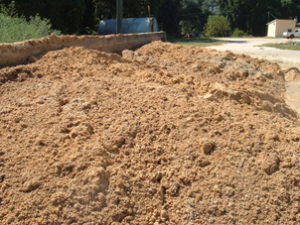
Wet brewers grains are the byproduct of producing beer. This is another favorite of the cows too. It is a high protein feed and an average carbohydrate source. It’s a wet feed (like the name implies) and is good at keeping a feed mix from getting to dry (like eating popcorn without butter). Because it is wet, it has to be fed quickly because it won’t store for more than 3 to 4 days, especially in hot weather. Close up, the texture looks a little bit like sawdust. The brewers grains this farm feeds happens to come from the Anheuser-Busch plant near Jacksonville, Florida. (Don’t worry, there is no alcohol present, but to be safe, we don’t let the cows drive.)
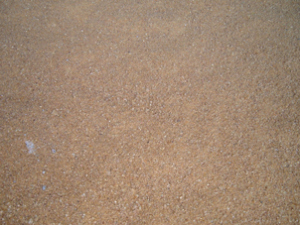
Distiller’s grains are almost the same thing as wet brewers grains, but are the byproducts from “spirit” making. It is also used as a protein and energy source. You may not be able to appreciate from the picture that there are some fine corn pieces and the same smell you might experience when cooking with the flavored alcohol extracts.
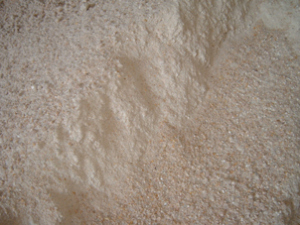
Anyone like grits? Wonder what happens to the rest of the corn in the process? The corn hominy we feed to cattle is the byproduct of making coarse grits for human consumption. It is one of the most “powdery” feeds for cattle and is a good energy source. The cows really like the taste of this. This is their version of “candy”, but will give them a bad belly ache if they eat too much.

One of the main things needed to keep cows healthy is a good fiber source. While the byproduct feeds I’ve talked about a good in a variety of ways, we still need an effective way to get fiber in them. One of the ways is to feed a good quality hay. This is alfalfa hay, which comes from farms in the west, typically Idaho. Our sandy soil in Florida does not allow us to grow alfalfa effectively, although we sure can supply the sunshine. We do have a variety of grasses that my clients make into hay, but they don’t have the protein that alfalfa supplies as well.
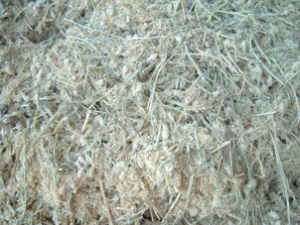
Dairy cows in Florida are typically fed two to three times a day. Most dairy farmers have the fresh feed ready for them to eat once they return from the milking parlor. (Their perfect time to refuel.) To help speed things along, farmers will sometimes make a “premix” of the dry ingredients (much like you do when you’re baking). This is an example of the premix at left. Notice how everything is evenly mixed? This premix includes everything I’ve talked about so far except the wet brewers grain (it would make a sloppy mess), but also includes their mineral, which is a gray, finely ground substance (a bit less coarse than table salt).
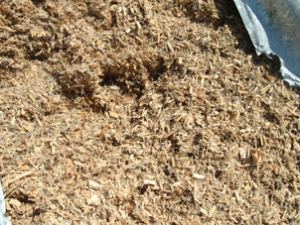
The last ingredient to talk about here is corn silage. In Florida, the corn is typically planted in late February to early March and harvested about mid to late June. The corn is harvested when it has a certain dryness (about 35 percent). The entire plant (ear, leaves and stalk) is harvested and chopped. This corn is then stored and allowed to ferment for a minimum of three weeks.
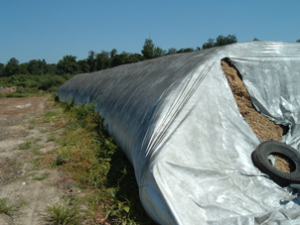
This dairy farm stores their corn silage in long plastic bags. Some farms will use the upright silos or will use a large bunker. For this farm, the bags best fit his management style.
You can see that these plastic bags for storing the corn silage are about 200 feet in length.
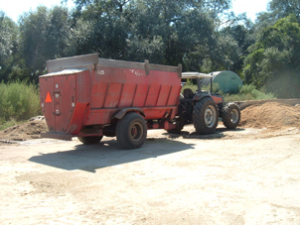
We’re finally ready to mix a load of feed for the dairy cows. Using a loader, the farmer can put a specific amount of the premix, corn silage, and wet brewers grains into the feed mixer. The operator dumps the feed into the mixer wagon (red thing behind the tractor). The mixer acts like an industrial size kitchen mixer and completely and thoroughly mixes each ingredient. Why would we want to do it this way? Cows can be like kids and pick and choose what they want to eat. To make sure they get a balanced diet, we make a big “casserole” (without having to put it in the oven.)
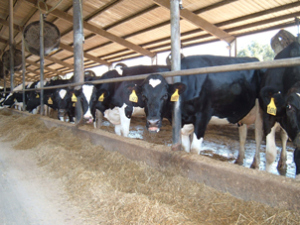
Now, it’s finally time to feed the cows! Hearing the tractor and mixer wagon coming is their equivalent to ringing the dinner bell. Chow time!
Yes, this gets done 2 to 3 times daily, 365 days a year. The girls never take a day off.
Dr. Kathy Swift has been a cattle veterinarian in Florida since 1997. When she’s not busy providing veterinary care to animals the North Florida area, she is enjoying her artistic side with

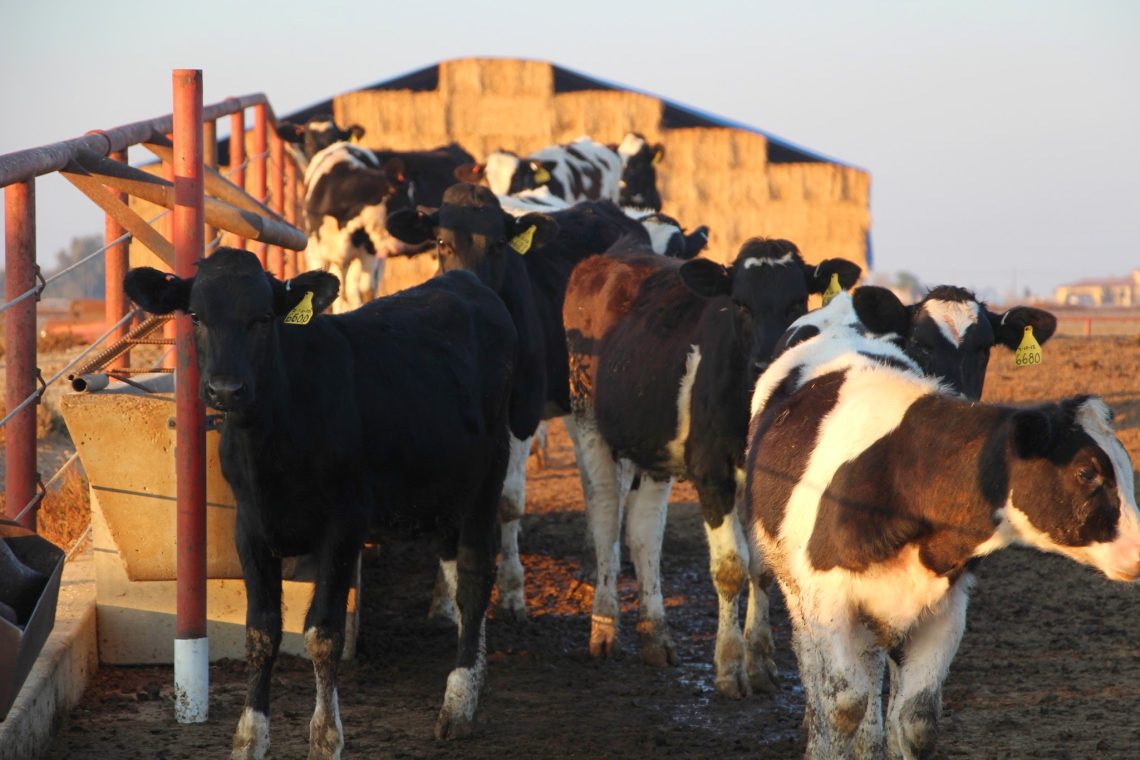


One comment on “What do cows eat and why?”